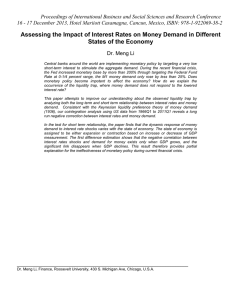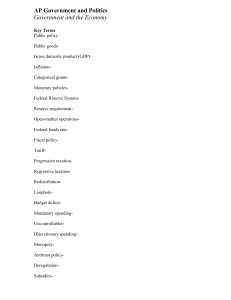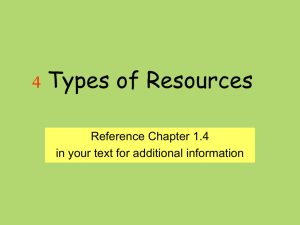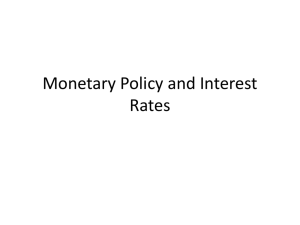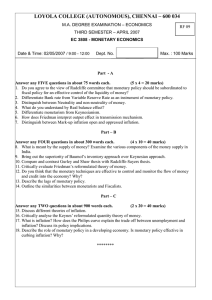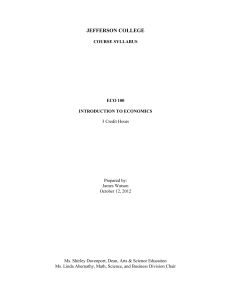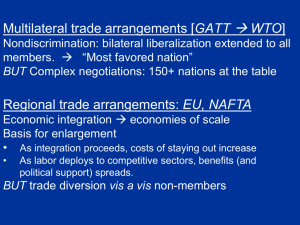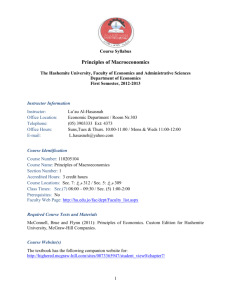Notes on The Economic Environment for Global Marketing
advertisement
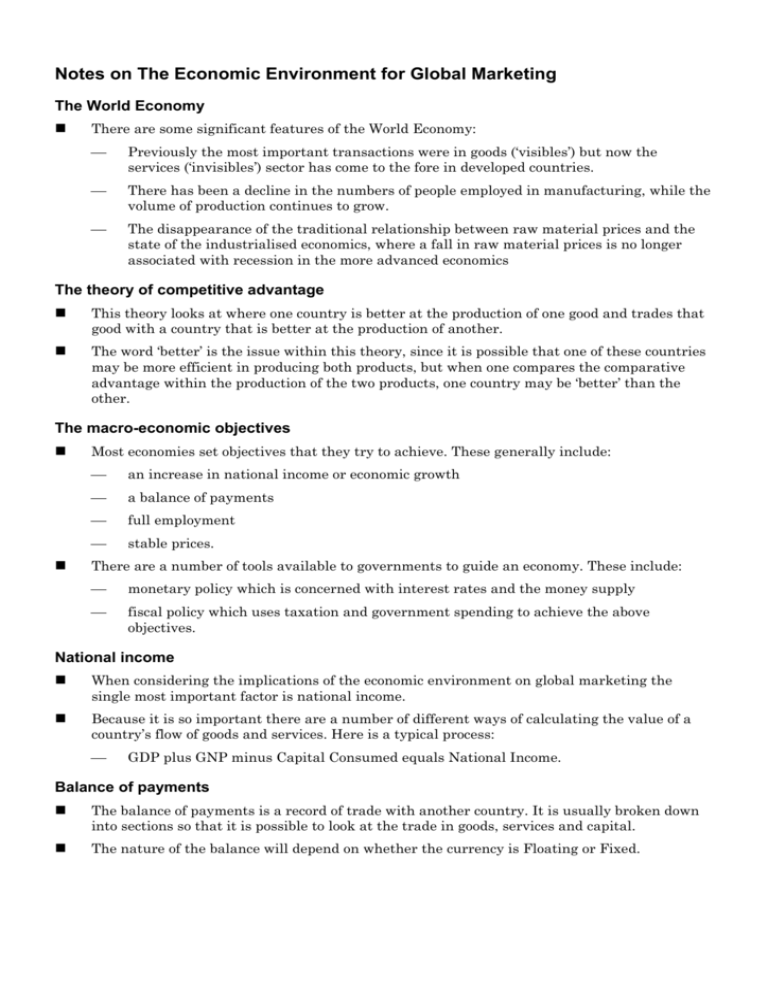
Notes on The Economic Environment for Global Marketing The World Economy There are some significant features of the World Economy: Previously the most important transactions were in goods (‘visibles’) but now the services (‘invisibles’) sector has come to the fore in developed countries. There has been a decline in the numbers of people employed in manufacturing, while the volume of production continues to grow. The disappearance of the traditional relationship between raw material prices and the state of the industrialised economics, where a fall in raw material prices is no longer associated with recession in the more advanced economics The theory of competitive advantage This theory looks at where one country is better at the production of one good and trades that good with a country that is better at the production of another. The word ‘better’ is the issue within this theory, since it is possible that one of these countries may be more efficient in producing both products, but when one compares the comparative advantage within the production of the two products, one country may be ‘better’ than the other. The macro-economic objectives Most economies set objectives that they try to achieve. These generally include: an increase in national income or economic growth a balance of payments full employment stable prices. There are a number of tools available to governments to guide an economy. These include: monetary policy which is concerned with interest rates and the money supply fiscal policy which uses taxation and government spending to achieve the above objectives. National income When considering the implications of the economic environment on global marketing the single most important factor is national income. Because it is so important there are a number of different ways of calculating the value of a country’s flow of goods and services. Here is a typical process: GDP plus GNP minus Capital Consumed equals National Income. Balance of payments The balance of payments is a record of trade with another country. It is usually broken down into sections so that it is possible to look at the trade in goods, services and capital. The nature of the balance will depend on whether the currency is Floating or Fixed. Full employment Most countries try to achieve full employment for economic, political and social reasons, although it is not strictly achievable because some people will be unemployable, some will be between jobs and some will refuse to work. Average incomes will be lower and markets for many products will be of a lower value. On the more positive side, unemployment allows a country to expand more rapidly before inflation takes a hold. Stable prices Rising prices (inflation) or falling prices (deflation) add another element of uncertainty into the equation when considering whether to invest in a country or not. Free trade Free trade between nations permits international specialisation, and enables a firm to increase output without being limited by the size of domestic market. This in turn may lead to economies of large-scale production, a decrease in long run average costs. Barriers to free trade include: Tariffs/Import duties Quotas Voluntary export restrictions Exchange control and Import Licenses ‘Invisible’ barriers. Regional trading groups For various reasons, countries get together to promote trade with each other. These regional trading groups take three forms: 1. Free trade areas. 2. Customs unions. 3. Economic unions/common markets. Major trade and economic organisations There are five major groupings: 1. World Trade Organisation (WTO) 2. Organisation for Economic Co-operation and Development (OECD) 3. World Bank (WB) 4. International Monetary Fund (IMF) 5. ‘G8’ European Economic and Monetary Union European Economic and Monetary Union (EMU) is a long-standing objective of the EU, reaffirmed in the Single European Act of 1985 and in the Maastricht agreement of 1991. EMU has three main aspects: 1. A common currency 2. A European central bank 3. A centralised monetary policy Economic structure and development Commonly used factors in classifying countries include: Infrastructure (e.g. the development of roads, transport, communications and energy distribution). Education and literacy levels. Ownership of durables (e.g., telephone, TV, fridge, etc. as appropriate). GDP (Gross Domestic Product) per head. This, effectively, is the value of goods and services produced within the economy. Generally each country can be classified under one of five headings: 1. Lesser Developed Country (LDC) 2. Early developed country (EDC) 3. Semi-developed country (SDC) 4. Fully developed country (FDC) 5. Former Eastern Bloc country (EBC) Measuring levels of economic development Measures that may be used by the international marketer include the following: GDP per head. Source of GDP (primary, secondary or tertiary sector based economy). Living standards (ownership of key durables may be used as a surrogate measure). Energy availability and usage. Education levels. Environmental issues are becoming more important since the Rio Summit. Identifying market size The economic worth of a consumer market is based on the following general factors: The number of people in the market. Their desire to own the goods. Their ability to purchase the goods. Thus in measuring a market, the marketer will obtain information on the following: Population. Income. Consumption patterns. Debt and inflation. Physical environment. Foreign trade.

